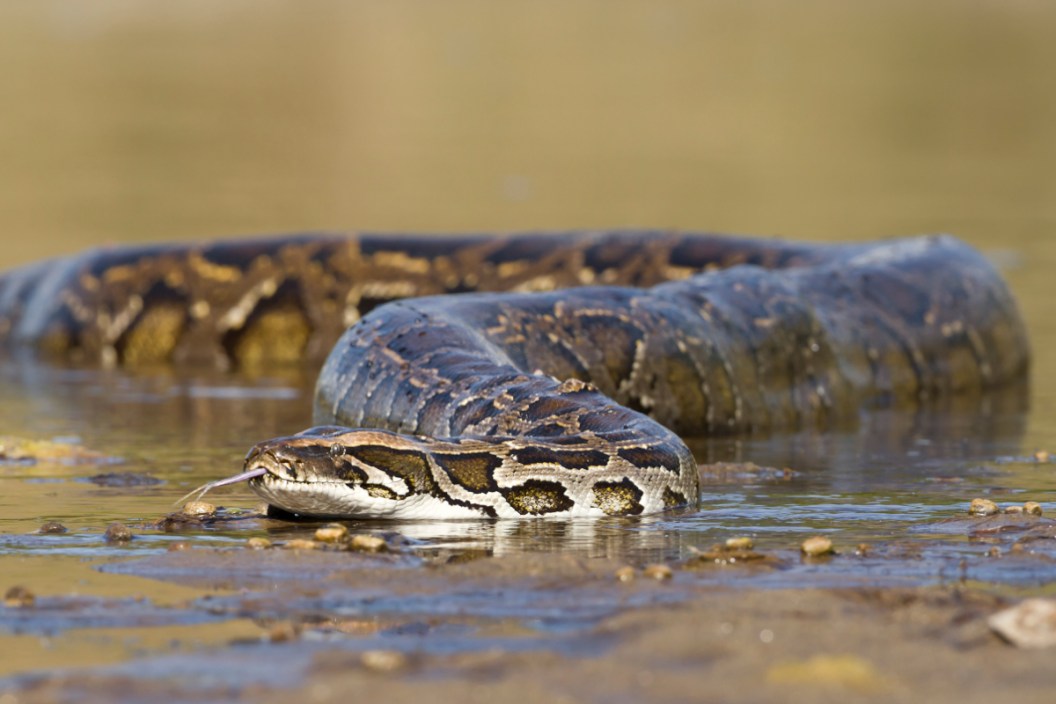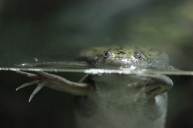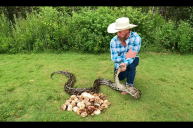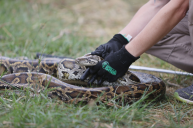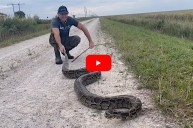The state of Florida has become something of a hotbed for invasive species over the last 30 years. Unfortunately, a plethora of invasive plants, animals, and even parasites, despite being non-native, have found Florida's warm climate much to their liking. These invasive animals not only survive but thrive, causing a host of issues that threaten both human health and the native species of the Sunshine State.
If you're visiting or living in Florida, it's important to be able to identify invasive species so that you can notify local authorities if you see them. It takes a lot of work to protect Florida's state and national parks and their precious natural resources. Invasive species threaten native species, and wildlife officials can use all the help they can get in identifying and eradicating them.
But first, let's define what an invasive species is.
What is an Invasive Species?
According to the National Oceanic and Atmospheric Administration (NOAA), an invasive species is "an organism that causes ecological or economic harm in a new environment where it is not native."
Invasive species are introduced, generally by humans, into habitats where they do not naturally occur. This can happen via the ballast water of ocean ships, intentional or accidental release, illegal bait, or a variety of other means. If they're released into a habitat that they can thrive in, invasive species can very quickly take over an environment, particularly if they have no natural predators themselves. They can cause the extinction of native plants and animals by competing for natural resources or overconsuming the food that's available. All of this can have huge environmental and economic impacts.
Invasive species are plentiful in Florida. The subtropical climate can allow a lot of non-native species to thrive, and Miami is a huge port that accidentally facilitates the transport of invasive species from other regions.
Below, a comprehensive roundup of the high-risk nonnative species to watch out for in your wilderness adventures in Florida's many beautiful natural areas. If spotted, report sightings of invasive species to the Florida Fish and Wildlife Conservation Commission.
1. Iguanas
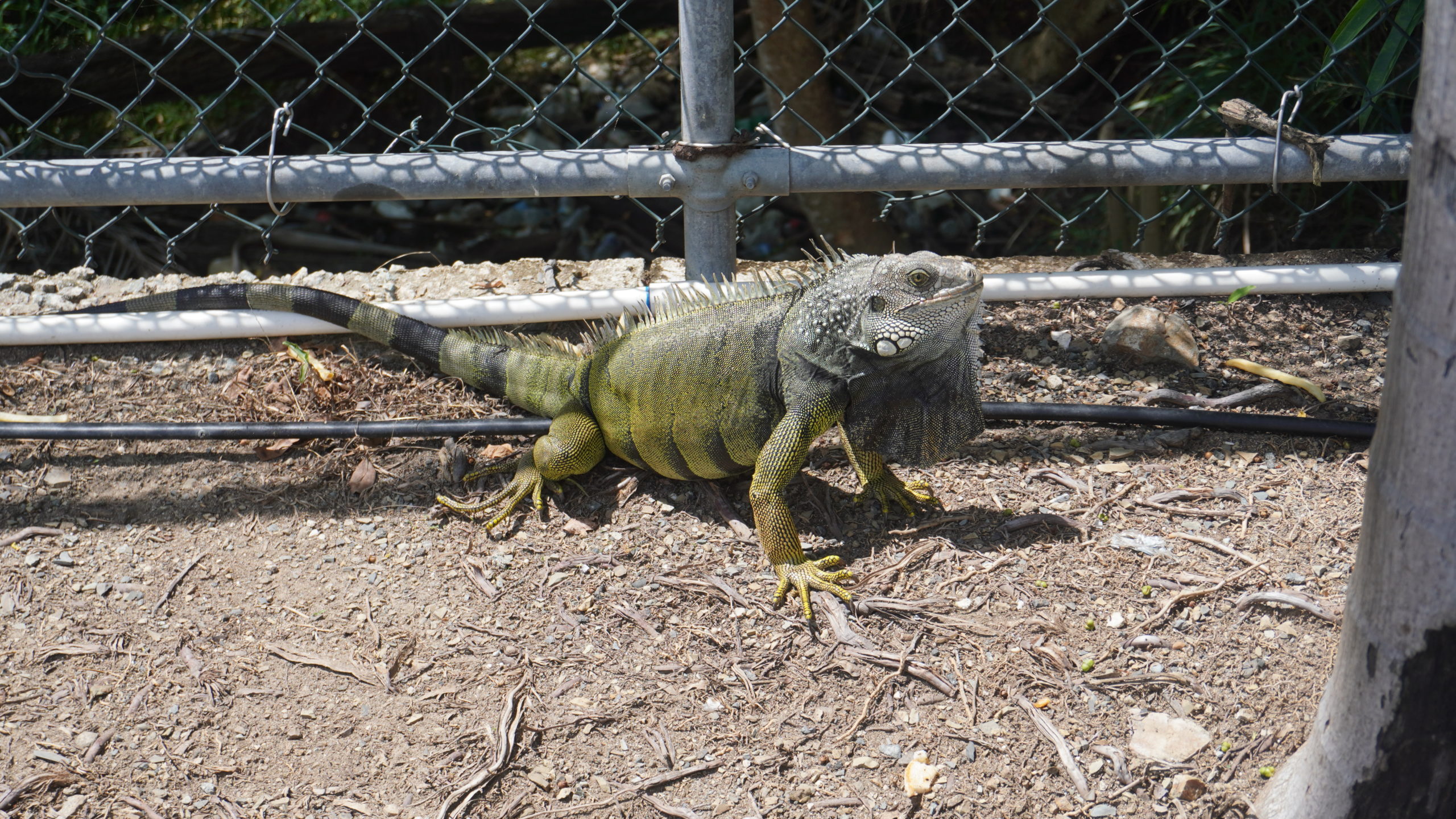
Travis Smola
At least three variants of non-native iguana have made Florida their home. While Mexican spiny-tailed iguanas, and black spiny-tailed iguanas both have a foothold, it's the common green iguana that causes problems in many neighborhoods around the Atlantic coastal regions, particularly Miami-Dade, Monroe, Martin, Palm Beach, and Broward counties.
These lizards grow to massive sizes, upwards of six feet in length. They also multiply quickly, with females laying upwards of 70 eggs a year.
It's believed most iguanas are either escapees or released animals from the exotic pet trade. They first started to establish a foothold in the 1960s. However, the invasion has become more obvious in the last five years as they have begun to take over neighborhoods. There are now bans on iguana importation, but it may be too little too late to stop a breeding population.
Iguana burrows are extremely destructive and can undermine the stability of homes. They are also able to pass salmonella to humans. The Florida Fish and Wildlife Conservation Commission (FWC) has responded to the invasion by putting extremely loose regulations on hunting iguanas. They can be killed year-round without a license, and many airgun enthusiasts have taken to using the weapon to eradicate iguanas on private property.
2. Burmese Pythons
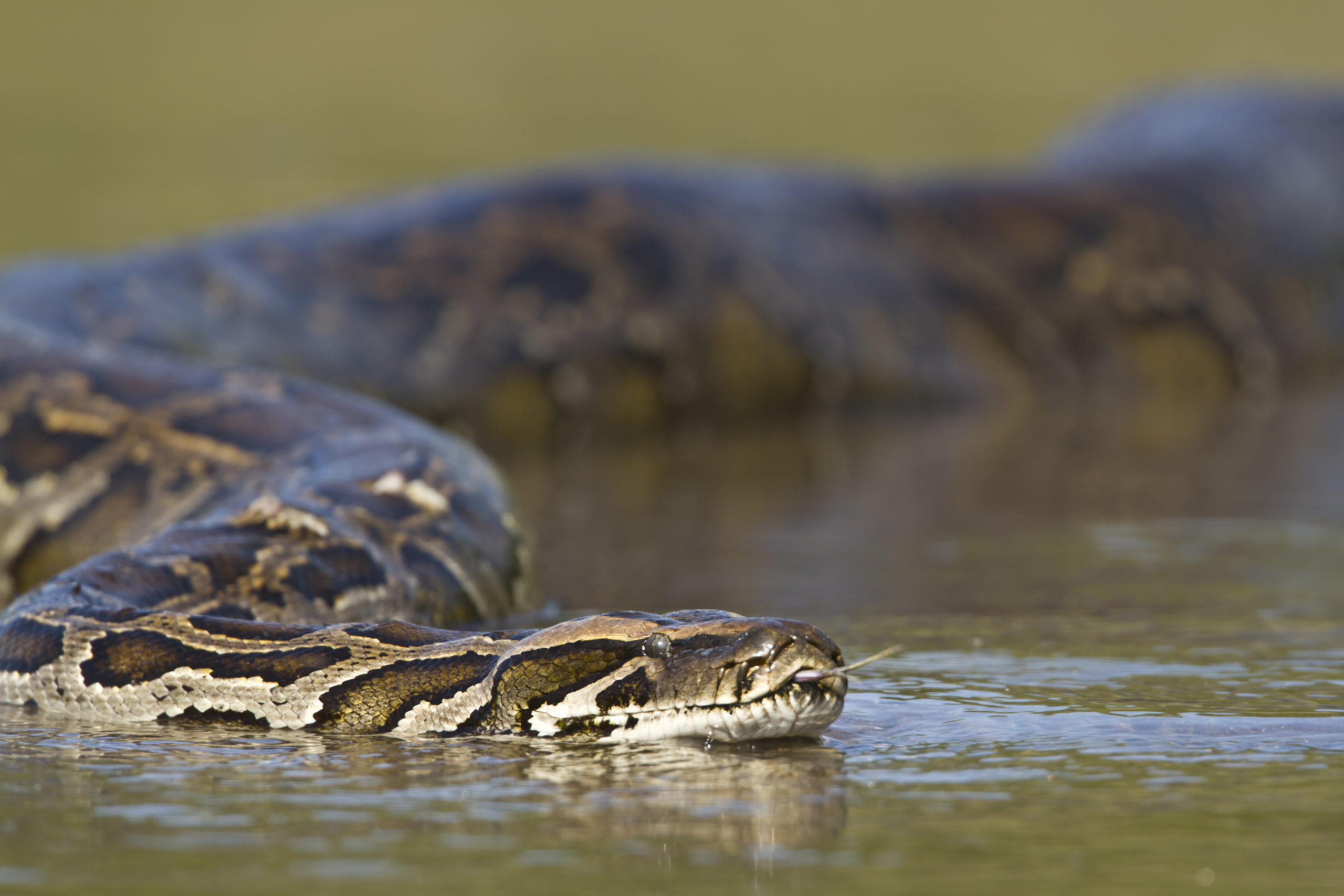
Getty Images, Utopia_88
Many a Floridian shivers at the thought of one of these giant pythons slithering through their neighborhood. Wildlife officials believe the Burmese python, a native of Asia, was first introduced to the Florida ecosystem in the 1980s. The early invaders were likely intentionally released by pet owners or escaped their enclosures.
In 1992, the python problem was compounded in the wake of Hurricane Andrew, because the storm destroyed a pet python breeding facility; many of those snakes were never rounded up. Instead, they found the Everglades much to their liking and began breeding.
Pythons are bad news for native wildlife. The big snakes can grow to lengths over 20 feet and feast on native raccoons, opossums, foxes, deer, and even alligators.
Because the females can lay upwards of 100 eggs a year, controlling the python population is not easy, especially as the snakes have no natural predators. The FWC has set up a dedicated elimination program that pays hunters for rapid response whenever one is reported. Plenty of python-hunting tournaments, such as the Florida Python Challenge, and eprofessional, full-time python hunters operating in parts of southern Florida also attempt to get the problem under control.
3. Cane Toads
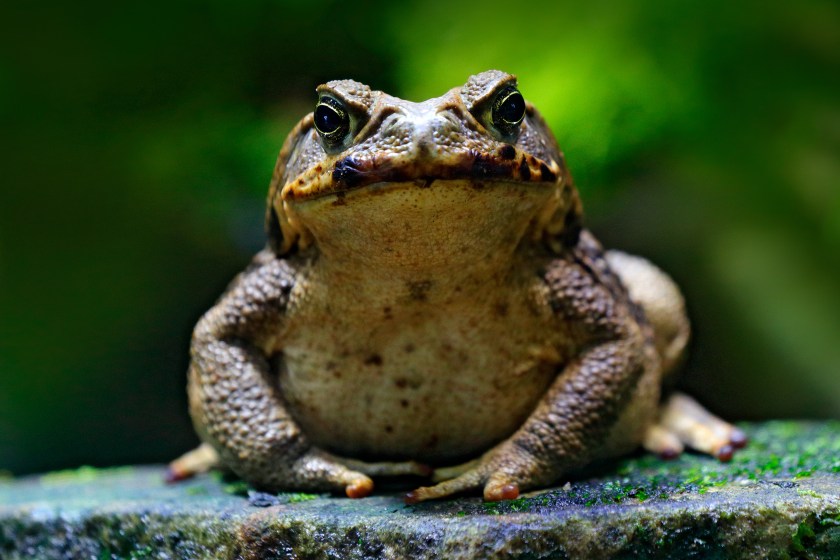
Ondrej Prosicky, Getty Images
Many different species of amphibians cause problems in Florida: the Cuban tree frog, the Mexican leaf frog, and the West African rubber frog, to name a few.
However, the cane toad is the invasive amphibian that Florida officials find the most concerning. These huge toads are native to South and Central America. They were first introduced to Florida in the 1930s and '40s to control pests in and around farmer's fields. That ended up being a huge mistake, as the critters quickly began reproducing and competing with native toads and frogs for habitat and food.
Worse, these toads are highly toxic, posing a huge threat to pets or small children who may try to handle them. Their skin secretes a dangerous toxin that can harm you just from handling a toad and can be deadly to cats and small dogs that lick or bite them.
These toads look much like native toads when they are young, which can cause problems with identification. Fortunately, the adult cane toads grow to massive sizes—six to nine inches in length, or the size of a dinner plate—much larger than native toads.
The big cane toads are not protected and can be killed or removed by anyone. The FWC recommends wearing rubber gloves to protect your skin from the toxic secretions this amphibian produces.
4. Lionfish
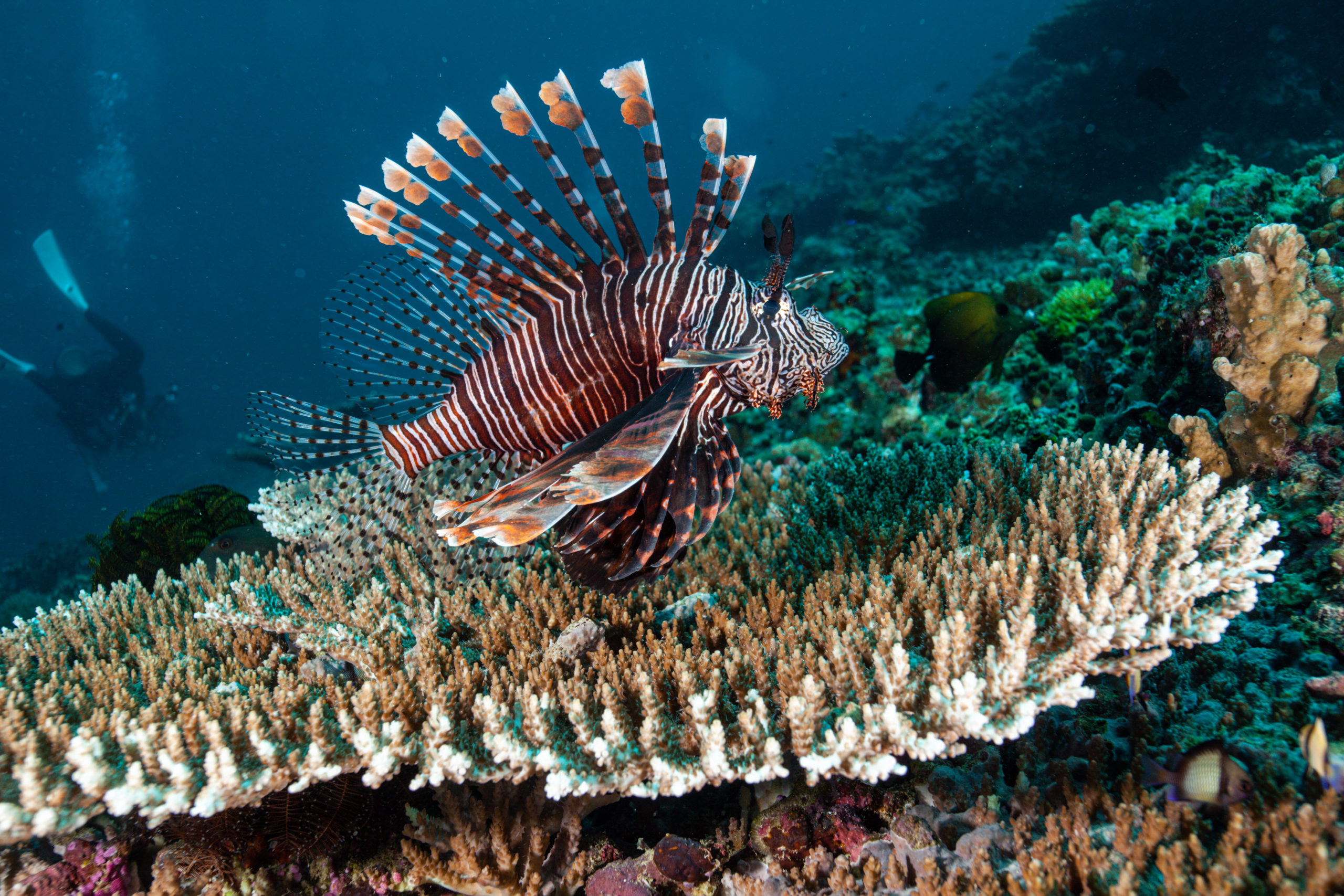
Getty Images, LuffyKun
The lionfish is native to the Red Sea and Indo-Pacific regions, on the other side of the globe from Florida. However, they started turning up in the Atlantic back in the 1980s, possibly from people dumping unwanted aquarium fish into the oceans. Lionfish are extremely popular in the aquarium trade because of their stunning looks. Unfortunately, invasive lionfish now have a foothold throughout the Gulf of Mexico and down to South America.
These non-native fish are reef predators that wreak havoc on the native fish populations of Florida's reefs. They also reproduce exceedingly quickly; each female lionfish can lay 15,000 eggs a year, which has helped the population explode. Not only that, their spikes eject a toxin that burns if you get barbed while snorkeling or diving.
Lionfish are unprotected and the FWC asks any anglers who catch one to kill them. They have become a popular target for spearfishermen and women for that reason.
While they have no natural predators in the Atlantic, some divers have been working to try and teach native sharks, barracuda, and other predators to feed on lion fish.
5. Gambian Pouched Rat
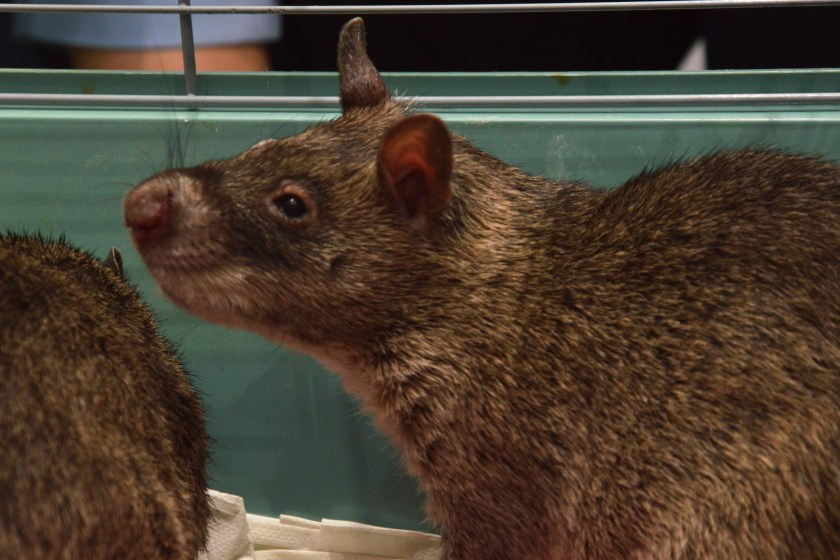
Getty Images, Vladimir Dyavhkov
We know Florida is full of rodents, so you might be thinking: "What's one more?"
Well, one more matters when it's the largest rat in the world, as the Gambian pouched rat is. Native to Africa, they can grow more than 30 inches in length (including a tail that takes up half the length) and weigh upwards of 4 pounds. These rats were popular in the pet trade; the current population in Florida stems from just eight rats that escaped a breeding facility in 2004. Thankfully, they're isolated to the island of Grassy Key for now. Pouched rats eat native insects, plants, land snails, fruit, and more. They also like munching on bird eggs, which puts many endangered species at risk.
The FWC closely monitors their population to prevent them from getting off the island. If they were to escape, it's likely they would spread quickly because, like most rodents, Gambian pouched rats reproduce multiple times a year. It's not uncommon for a female to give birth up to five times annually.
Aside from being gigantic, the rats carry many diseases. The CDC believes this species may have been responsible for an outbreak of monkeypox in the Midwest back in 2003. Some hunters have taken up shooting the Gambian pouched rats with high-power air rifles and night scopes, but it's hard to put a dent in the population on Grassy Key because of how quickly they reproduce.
6. Snakehead Fish
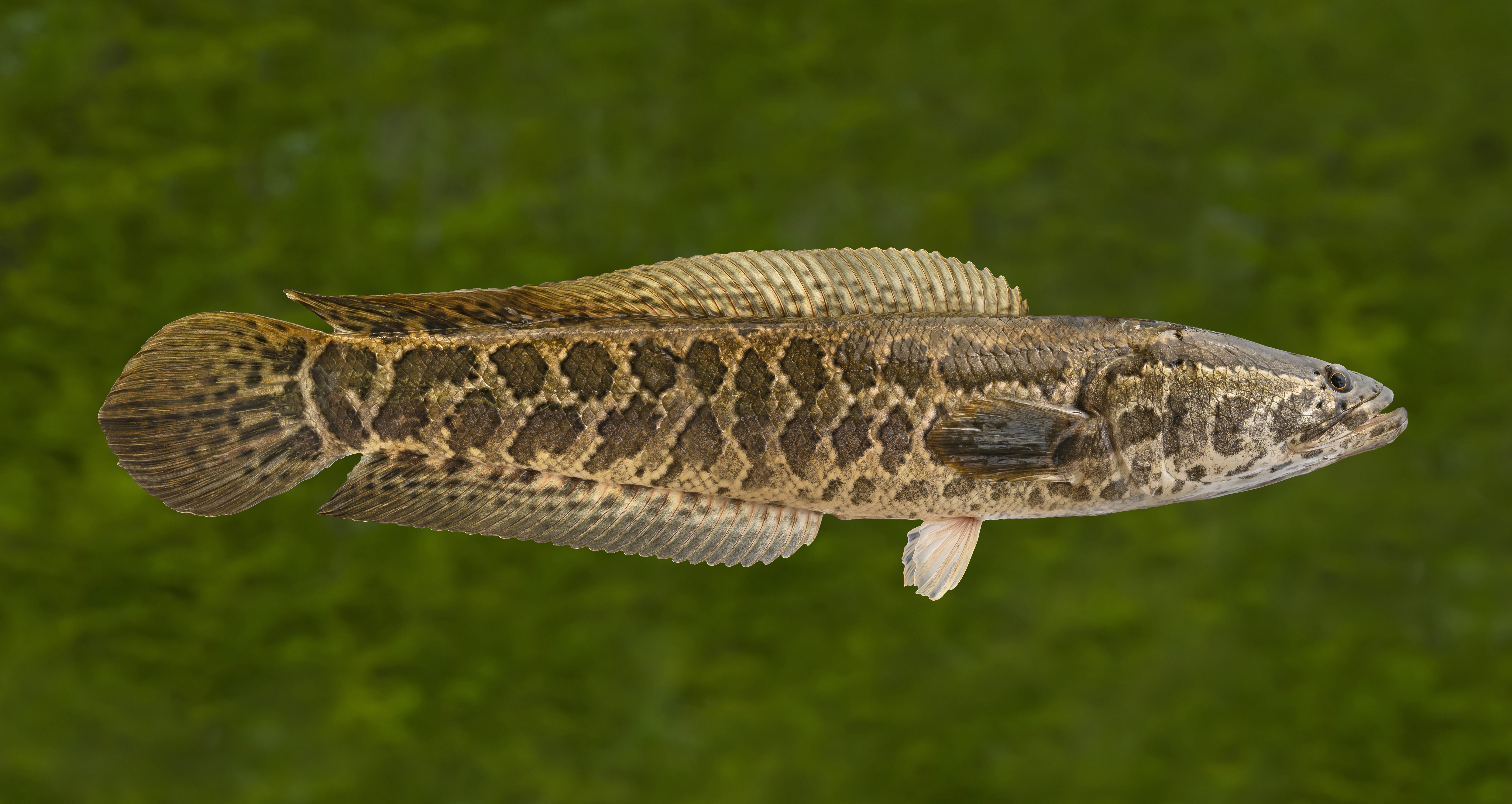
Getty Images, FedBul
There are two species of freshwater snakehead fish currently in Florida, as recognized by the FWC. There is the northern snakehead and the bullseye snakehead.
Originally native to Asia and Africa, these fish have proven an extreme challenge for invasive-species management programs because of how quickly they reproduce and take over ecosystems. These fish have become such a problem, that the U.S. Department of Agriculture has made northern snakehead importation illegal anywhere in the U.S. without a permit.
While these fish provide a great fight for anglers, they also gobble up native fish, crayfish, and other aquatic species, while simultaneously pushing many native predatory fish out of the area.
For now, snakehead fish are mostly isolated to south Florida. No one seems quite sure how they got here, but it's assumed that human transport and release was the culprit. Now, snakeheads have a well established population and anglers regularly catch specimens of 10 pounds or more.
The FWC encourages anglers to catch as many snakeheads as they want. If caught, they should be immediately killed and should never be thrown back. While rod and reel has proven popular for targeting them, they are also a popular target of bowfishing enthusiasts.
7. Tegus

Getty Images, aaprophoto
A relative newcomer as far as invasive species, the FWC documented breeding populations of Argentine black and white tegus in St. Lucie, Charlotte, and Miami-Dade counties. Popular in the pet trade, these reptiles were quickly put on a prohibited species list for the state. Owning, breeding, or selling tegus is now completely banned.
These lizards grow to lengths of four feet or more, and a female can lay as many as 30 eggs a season. They're also a long-lived species, regularly reaching 20 years or more in the wild, compounding the problem of tegus as an invasive species. Their long life requires extra emphasis on early detection strategies in counties that do not have tegus.
The tegus is a notorious egg eater and has been documented eating alligator eggs. Ground-nesting birds, endangered turtles, and tortoise eggs are also potentially in danger because of these reptiles.
Due to the dangers to native wildlife, residents can kill as many tegus as they want without any license, even on public land.
8. Feral Hogs
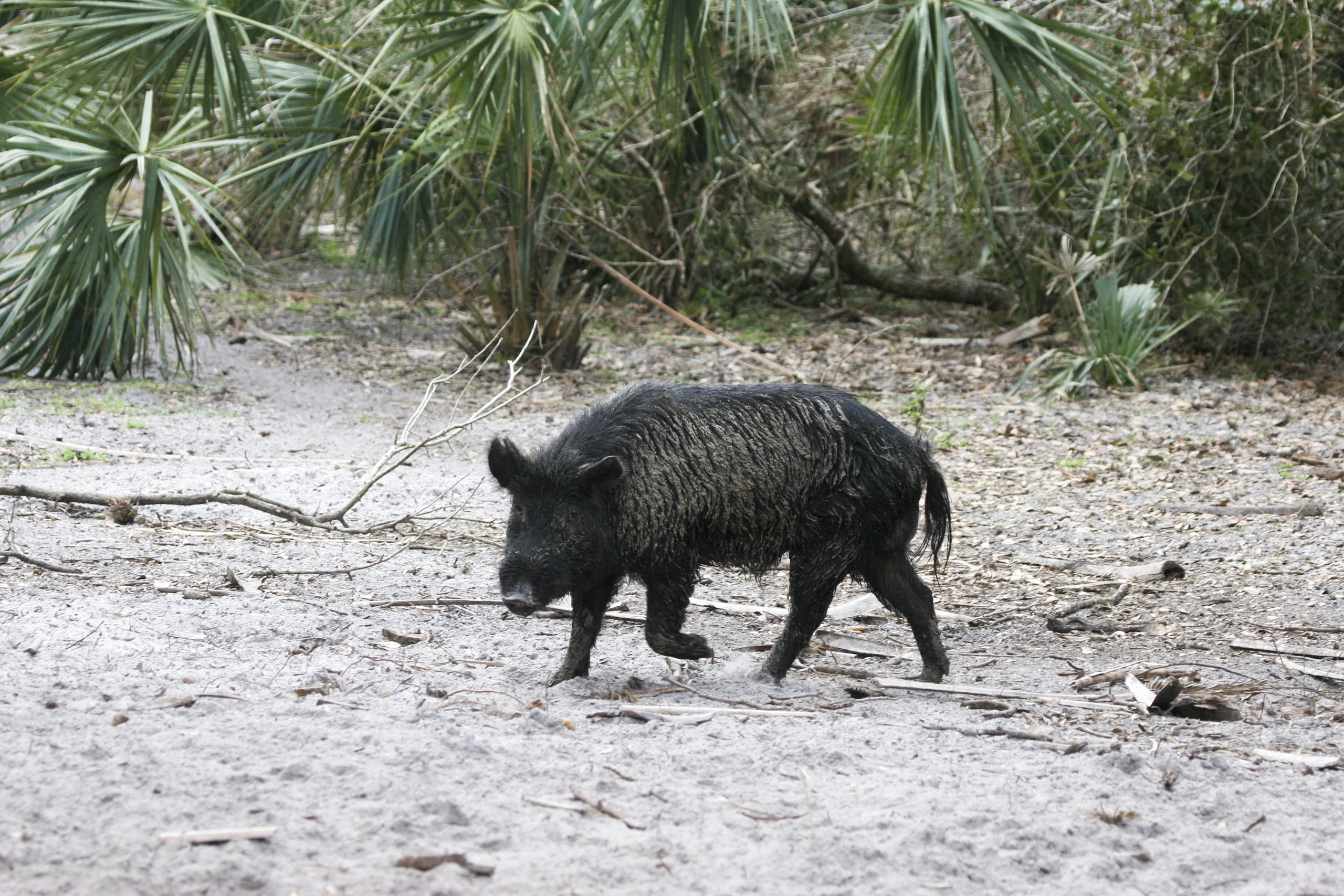
Getty Images, sstaton
Next to Texas, Florida may have the second worst feral hog problem in North America. Feral swine have become thoroughly established in every county in Florida and the sounders are capable of hundreds of thousands of dollars of destruction a year to human agriculture, lawns, and landscaping. These mammals are true eating machines, chowing down on just about anything in their path. In addition to feasting on native plant species, they'll also eat things like turkey eggs or even fawns if they can catch them. Their wallowing behavior destroys ponds and stream banks and affects water quality.
Sadly, no one alive today can remember a time when feral hogs weren't causing issues for Florida. The FWC believes they were first introduced to the state back in the 1500s when some of the first European explorers, the conquistadors, landed in Florida. Feral hogs reproduce quickly, with a sow often giving birth to multiple litters a year. Because of this, eradication of wild hogs is likely impossible in Florida. The only thing to do is control them.
Like Texas, Florida's laws on hunting of feral hogs are extremely loose. There are no bag limits, you can hunt them 24 hours a day, seven days a week, except in certain wildlife management areas. There are no permits or hunting licenses required, just landowner permission if on private land. You can trap them, shoot them, or even hunt them with dogs.
